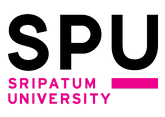Please use this identifier to cite or link to this item:
http://dspace.spu.ac.th/handle/123456789/1659| Title: | An Empirical Investigation of the Contribution of Computer Self-Efficacy,Computer Anxiety, and Instructors’ Experience with the Use of Technology |
| Authors: | Ball, Diane M. |
| Keywords: | Investigation Computer Self-Efficacy Classrooms |
| Issue Date: | 19-March-2553 |
| Abstract: | Over the past decade there has been a shift in the emphasis of emerging educational technology from use in online settings to supporting face-to-face and mixed delivery classes. Although emerging educational technology integration in the classroom has increased in recent years, technology acceptance and usage continue to be problematic for educational institutions. In this predictive study the researcher aimed to predict university instructors’ intention to use emerging educational technology in traditional classrooms based on the contribution of computer self-efficacy (CSE), computer anxiety (CA), and experience with the use of technology (EUT), as measured by their contribution to the prediction of behavioral intention (BI). Fifty-six instructors from a small, private university were surveyed to determine their level of CSE, CA, and EUT, and their intention to use emerging educational technology in traditional classrooms. A theoretical model was proposed, and two statistical methods were used to formulate models and test predictive power: Multiple Linear Regression (MLR) and Ordinal Logistic Regression (OLR). It was predicted that CSE, CA, and EUT would have a significant impact on instructors’ intention to use emerging educational technology in the classroom. Results showed overall significant models of the three aforementioned factors in predicting instructors’ use of emerging educational technology in traditional classrooms. Additionally, results demonstrated that CSE was a significant predictor of the use of emerging educational technology in the classroom, while CA and EUT were not found to be significant predictors. Two important contributions of this study include 1) an investigation of factors that contribute to instructors’ acceptance of an emerging educational technology that has been developed specifically to respond to current demands of higher education, and 2) an investigation of key constructs contributing to instructors’ intention to use emerging educational technology in the classroom. |
| URI: | http://dspace.spu.ac.th/handle/123456789/1659 |
| Appears in Collections: | S_CHO-09. วิทยานิพนธ์ปริญญาโท |
Files in This Item:
| File | Description | Size | Format | |
|---|---|---|---|---|
| Diane M. Ball.pdf | 471.9 kB | Adobe PDF | View/Open |
Items in DSpace are protected by copyright, with all rights reserved, unless otherwise indicated.
